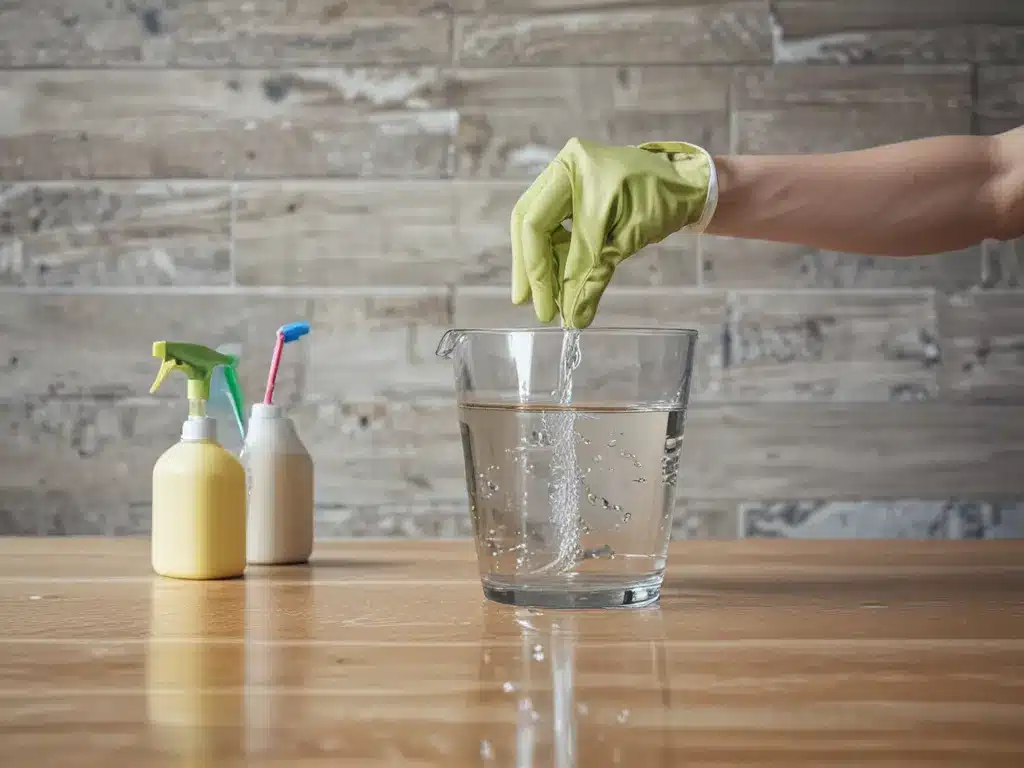Introduction
Water pollution is a major problem affecting our oceans, lakes, rivers and groundwater. As individuals, one of the biggest ways we contribute to water pollution is through cleaning and household activities. The good news is there are many steps we can take to stop polluting water sources and keep them clean for the environment and future generations. In this article, I will provide an in-depth look at how cleaning contributes to water pollution, and actionable tips on how to clean in an eco-friendly way.
How Cleaning Contributes to Water Pollution
Use of Harmful Chemicals
Many conventional cleaning products contain harmful chemicals like bleach, ammonia, synthetic fragrances, and more. When these chemicals are washed down drains and flushed into water systems, they contaminate groundwater and pollute waterways. Some specific chemicals contribute to pollution as follows:
-
Bleach – Contains chlorine which is toxic to aquatic life. Can react with other compounds to form carcinogenic byproducts.
-
Ammonia – Ammonia dissolves easily in water and is toxic to fish and other organisms.
-
Synthetic fragrances – Various artificial fragrance chemicals are not biodegradable and toxic.
-
Phosphates – Cause excessive algae growth reducing oxygen levels needed by aquatic life. Found in many detergents.
Inefficient Waste Disposal
Many cleaning routines generate significant waste that is washed down drains or ends up in landfills. This includes:
- Plastic packaging from cleaning products
- Old sponges, mops, and other gear
- Unused cleaning solution washed down sinks
- Lint and microplastics from washing machines
All this waste can leach chemicals, plastics, and other pollutants into ground and surface water if not disposed of properly.
Misuse of Antibacterial Products
Many people overuse antibacterial cleaners thinking they are more effective. However, the active ingredients like triclosan get flushed down drains and have been found accumulating in waterways where they kill beneficial bacteria.
Car Washing
Washing cars at home directing sends dirt, oil, grease and detergents on the driveway into storm drains that flow into lakes and rivers untreated.
Tips to Prevent Water Pollution While Cleaning
1. Use Natural Cleaning Products
Replace conventional cleaners containing bleach, ammonia, phosphates, etc. with natural products:
-
Baking soda – Cleans, deodorizes, softens water for washing.
-
White vinegar – Disinfects, breaks down grease and grime.
-
Lemon juice – Bleaches stains, cuts grease, and disinfects.
-
Hydrogen peroxide – Disinfects and whitens without toxic byproducts.
-
Castile soap – Plant-based soap that cleans effectively.
2. Dispose Cleaning Waste Responsibly
-
Recycle packaging from cleaning products and buy in bulk to reduce waste.
-
Compost natural sponges or mop heads.
-
Avoid antimicrobial gear which contain triclosan; opt for reusable microfiber cloths and mops.
-
Install a lint filter on your washing machine outlet to catch microfibers.
3. Limit Use of Antibacterial Products
Use antibacterial cleaners only for disinfecting high risk areas like bathrooms. For general cleaning, soap and water are sufficient.
4. Wash Cars at a Commercial Car Wash
Washing cars at a commercial car wash is required by many municipalities because the water gets treated before being discharged back into the environment.
5. Maintain Septic Systems
If you live in a rural area, maintain your septic system properly to reduce leaching of waste into groundwater. Inspect annually and pump out sludge every 3-5 years.
6. Dispose Hazardous Waste Properly
Take any toxic cleaning products like bleach, oven cleaner, etc. to a hazardous waste disposal facility. Never pour down drains or discard in regular trash.
Conclusion
The good news is we can all help reduce water pollution from cleaning through simple changes like using natural products, disposing waste responsibly, and being mindful about antimicrobial overuse. Following these tips will ensure our cleaning routines don’t come at the cost of clean water sources. With some adjustment of habits, we can all do our part to stop contributing to water pollution.







